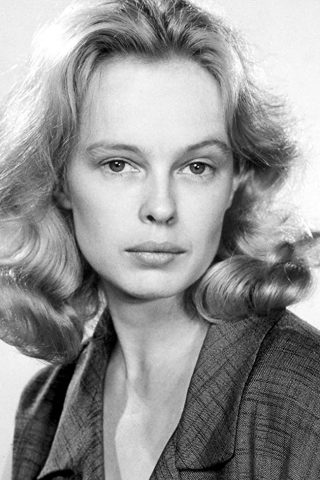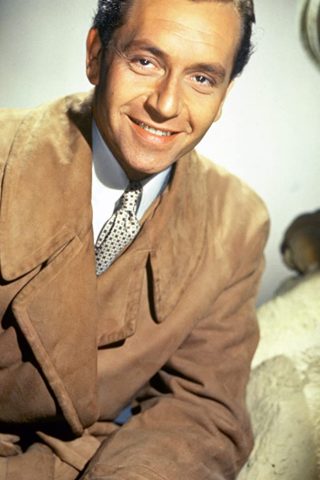
| Name | Sandy Dennis |
| Phone |  |
| Email ID |  |
| Address |  |
| Click here to view this information |
It would not be easy for anyone to out-do one of American theater’s finest thespians, but somehow actress Sandy Dennis managed to even out-quirk the legendary Geraldine Page when it came to affecting nervous ticks and offbeat mannerisms on stage and in film. She and Page had few peers when it came to the neurotic-dispensing department. The two Actor’s Studio disciples developed fascinating characterizations that seemed to manifest themselves outwardly to such physical extremes and, like a bad car accident, their overt styling was capable of both drawing in, and repelling audiences. There was no gray area. Either way, both had a searing emotional range and were undeniably transfixing figures who held up Oscar trophies to prove there was a “Method” to their respective madness. Sandy’s signature quirks – her stuttering, fluttering, throat gulps, eye twitches, nervous giggles, hysterical flailing – are all a part of what made her so distinctive and unforgettable. Her untimely death of cancer at age 54 robbed the entertainment industry of a remarkable talent.
The Nebraska-born-and-bred actress was born Sandra Dale Dennis on April 27, 1937 in Hastings, the daughter of Yvonne (Hudson), a secretary, and Jack Dennis, a postal clerk. Living in both Kenesaw (1942) and Lincoln (1946) while growing up, she and brother Frank went to Lincoln High School with TV host Dick Cavett. Her passion for acting grew and grew while still at home. A college student at both Nebraska Wesleyan University and the University of Nebraska, she eventually found her career direction after appearing with the Lincoln Community Theater Group.
The toothy actress left Nebraska and towards the Big Apple at age 19 just to try her luck. An intense student of acting guru Uta Hagen, Sandy made her New York stage debut in a Tempo Theatre production of “The Lady from the Sea” in 1956 and that same year won her first TV role as that of Alice Holden in the daytime series Guiding Light (1952). A year later she made it to Broadway as an understudy (and eventual replacement) for the roles of Flirt and Reenie in the William Inge drama “The Dark at the Top of the Stairs,” directed by Elia Kazan at the Music Box Theatre. She toured with that production and also found regional work in the plays “Bus Stop” and “Motel” while continuing to shine as a budding New York fixture in “Burning Bright,” “Face of a Hero” and “Port Royal”.
Along with fellow newcomers Gary Lockwood and Phyllis Diller, Sandy made her movie debut in playwright Inge’s Splendor in the Grass (1961), a movie quite welcoming of Sandy’s neurotic tendencies. In the minor but instrumental role of Kay, she is an unwitting instigator of friend Deanie’s (played by an ambitiously unbalanced Natalie Wood) mental collapse. Despite this worthy little turn, Sandy would not make another film for five years.
Instead, the actress set her sights strongly on the stage and for this she was handsomely rewarded, most notably in comedy. After appearing in a two-month run of the Graham Greene drama “The Complaisant Lover” at the Ethel Barrymore Theatre in 1961, stardom would be hers the very next year with her outstanding social worker role in the lighter-weight “A Thousand Clowns”. Winning the Theatre World as well as the coveted Tony Award for her performance, she continue her run of prizes with a second consecutive Tony for her sexy turn in the comedy “Any Wednesday” (1964). Having made only one picture at this juncture, Sandy was not in a good position to transfer her award-winning characters to film and when they did, they went to Barbara Harris and Jane Fonda, respectively.
TV was also a viable medium for Sandy and she appeared sporadically on such programs as “The Fugitive,” “Naked City” and “Arrest and Trial”. In 1965, she appeared in London as Irina in a heralded Actor’s Studio production of Chekhov’s “The Three Sisters” with fellow devotees Geraldine Page, Kim Stanley, Shelley Winters, Luther Adler and Kevin McCarthy. The play was subsequently videotaped and directed by Paul Bogart, and is valuable today for the studied “Method” performances of its cast. It, however, received mixed reviews upon its release.
Returning to film in 1966, Sandy seemed to embellish every physical and emotional peculiarity she could muster for the role of the mousy wife Honey in the four-character powerhouse play Who’s Afraid of Virginia Woolf? (1966) by Edward Albee. It is a mouth-dropping, emotionally shattering performance, and both she and a more even-keeled George Segal as the drop over guests of the skewering cutthroat couple George and Martha (Elizabeth Taylor and Richard Burton) more than held their own. While the distaff cast won Oscars for this (Taylor for “Best Actress” and Dennis for “Best Supporting Actress”), this ferocious landmark film blew open the “Production Code” doors once and for all and a wave of counterculture filming tackling formerly taboo subjects came to be.
Firmly established now with her Oscar win, Sandy found highly affecting lead showcases for herself. She was quite memorable and won the New York Film Critics Award for her young, naive English teacher challenged by a New York “Blackboard Jungle”-like school system in Up the Down Staircase (1967). She also stirred up some controversy along with Anne Heywood playing brittle lesbian lovers whose relationship is threatened by a sexy male visitor (Keir Dullea) in another ground-breaking film The Fox (1967). Sandy remained intriguingly off-kilter in the odd-couple romantic story Sweet November (1968) opposite Anthony Newley, the bizarre Robert Altman thriller That Cold Day in the Park (1969), and the gloomy British melodrama A Touch of Love (1969) [aka Thank You All Very Much].
Off-camera, Sandy lived for over a decade with jazz musician and saxophonist Gerry Mulligan, which began in 1965 following his devoted relationship with actress Judy Holliday who had died of cancer earlier in the year. They eventually parted ways in 1976. Rumors that they had married at some point were eventually negated by Sandy herself. Sandy also went on to have a May-December relationship with the equally quirky actor Eric Roberts from 1980 to 1985. She had no children.
At the peak of her film popularity, Sandy began the 1970s in more mainstream fashion. She and Jack Lemmon were another odd-couple hit in Neil Simon’s The Out of Towners (1970) as married George and Gwen Kellerman visiting an unmerciful Big Apple. Sandy is at her whiny, plain-Jane best (“Oh, my God…I think we’re being kidnapped!”) as disaster upon disaster befalls the miserable twosome. Both she and Lemmon were nominated for Golden Globes. Following this, however, Sandy again refocused on the stage with an avalanche of fine performances in “How the Other Half Loves,” “And Miss Reardon Drinks a Little,” “A Streetcar Named Desire” (as Blanche), “Born Yesterday” (as Billie Dawn), “Absurd Person Singular,” “Cat on a Hot Tin Roof” (as Maggie the Cat), “Same Time, Next Year,” “The Little Foxes,” “Eccentricities of a Nightingale,” “The Supporting Cast” and even the title role in “Peter Pan”.
A few TV and movie roles came Sandy’s way in unspectacular fashion but it wasn’t until the next decade that she again stole some thunder. After a moving support turn as a cast-off wife in the finely-tuned ensemble drama The Four Seasons (1981), Sandy proved terrific as a James Dean extremist in another ensemble film Come Back to the 5 & Dime Jimmy Dean, Jimmy Dean (1982), which she played first to fine acclaim on Broadway. Reunited with director Robert Altman as well as her stage compatriots Cher, Karen Black, Kathy Bates, Sudie Bond and Marta Heflin, the film version was equally praised. Her last films included Another Woman (1988), 976-EVIL (1988) and Parents (1989).
Seen less and less in later years, she gave in to her eccentric tendencies as time went on. A notorious cat lover (at one point there was a count of 33 residing in her Westport, Connecticut home), close friends included actresses Brenda Vaccaro and Jessica Walter. Her father Jack died in 1990 and around that same time Sandy was diagnosed with ovarian cancer. Undergoing chemotherapy at the time she filmed the part of a beaten-down mother in Sean Penn’s The Indian Runner (1991), the role proved to be her last.
Sandy died in Westport on March 3, 1992. Her ashes were placed at the Lincoln Memorial Park in Lincoln, Nebraska. A foundation in her home state was set up to “memorialize the accomplishments of Sandy Dennis, to perpetuate her commitment to education and the performing arts, to promote cultural activities, and to encourage theatrical education, performance, and professionals”. A book, “Sandy Dennis: A Personal Memoir,” was published posthumously in 1997.
Details
Sandy Dennis Keywords
Sandy Dennis Contact Details, Sandy Dennis Facebook, Sandy Dennis Instagram, Sandy Dennis Phone Number, Sandy Dennis Cell Phone, Sandy Dennis Address, Sandy Dennis Whatsapp Number, Sandy Dennis Whatsapp Group, Sandy Dennis Email, Sandy Dennis Phone Number 2020, Sandy Dennis Twitter Account




